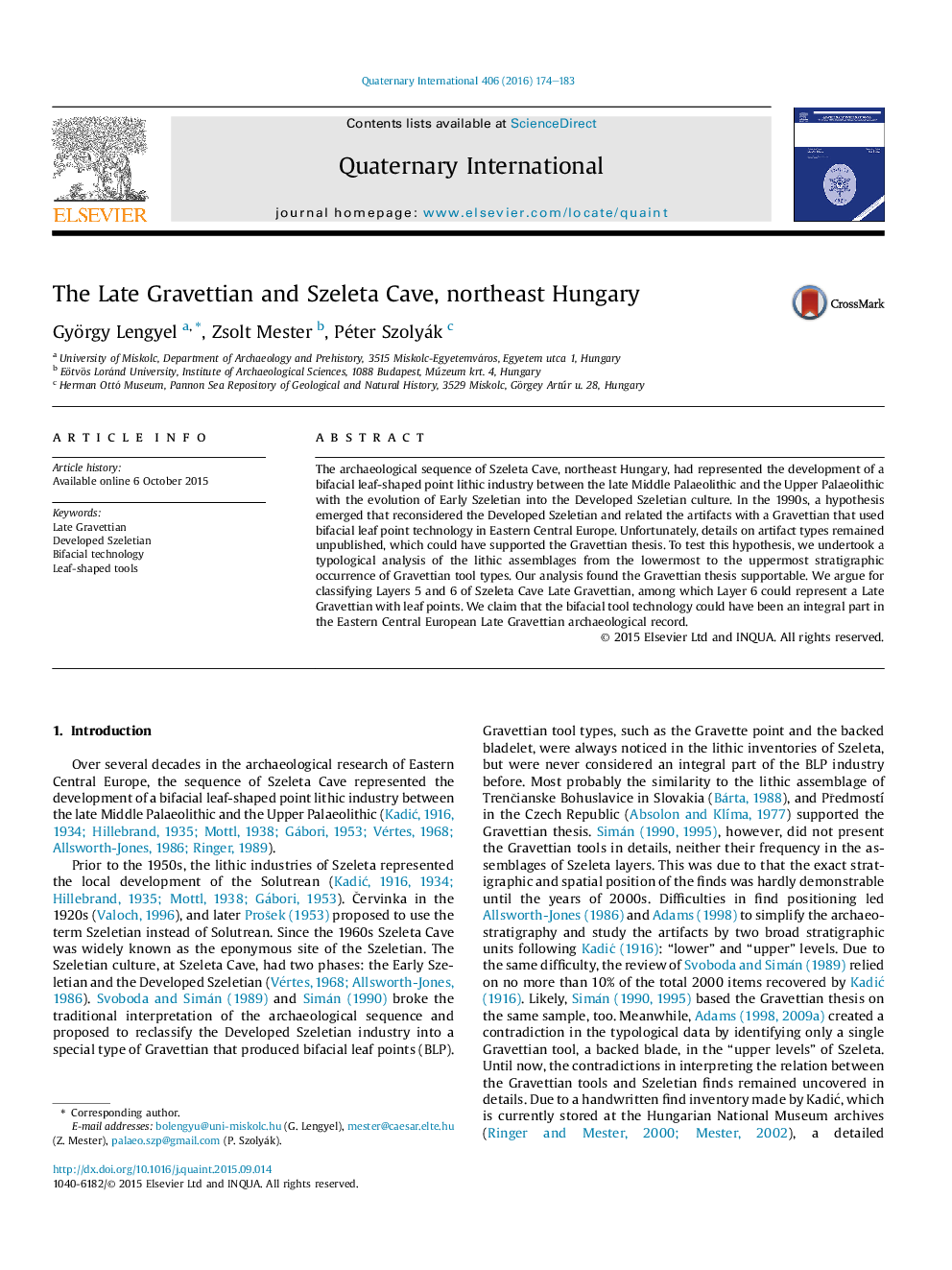| Article ID | Journal | Published Year | Pages | File Type |
|---|---|---|---|---|
| 1039975 | Quaternary International | 2016 | 10 Pages |
The archaeological sequence of Szeleta Cave, northeast Hungary, had represented the development of a bifacial leaf-shaped point lithic industry between the late Middle Palaeolithic and the Upper Palaeolithic with the evolution of Early Szeletian into the Developed Szeletian culture. In the 1990s, a hypothesis emerged that reconsidered the Developed Szeletian and related the artifacts with a Gravettian that used bifacial leaf point technology in Eastern Central Europe. Unfortunately, details on artifact types remained unpublished, which could have supported the Gravettian thesis. To test this hypothesis, we undertook a typological analysis of the lithic assemblages from the lowermost to the uppermost stratigraphic occurrence of Gravettian tool types. Our analysis found the Gravettian thesis supportable. We argue for classifying Layers 5 and 6 of Szeleta Cave Late Gravettian, among which Layer 6 could represent a Late Gravettian with leaf points. We claim that the bifacial tool technology could have been an integral part in the Eastern Central European Late Gravettian archaeological record.
